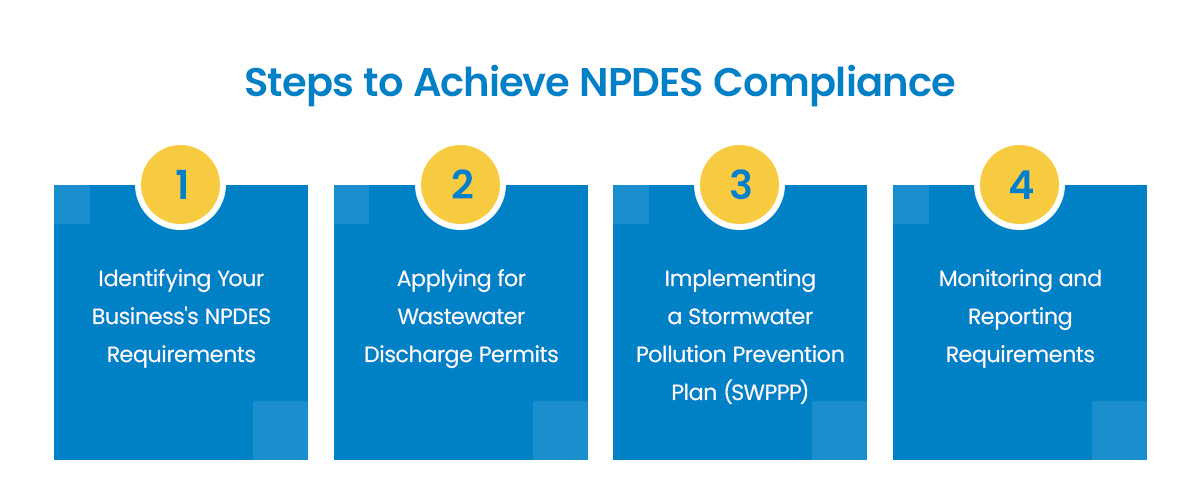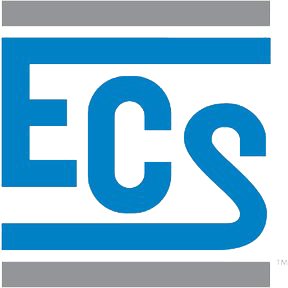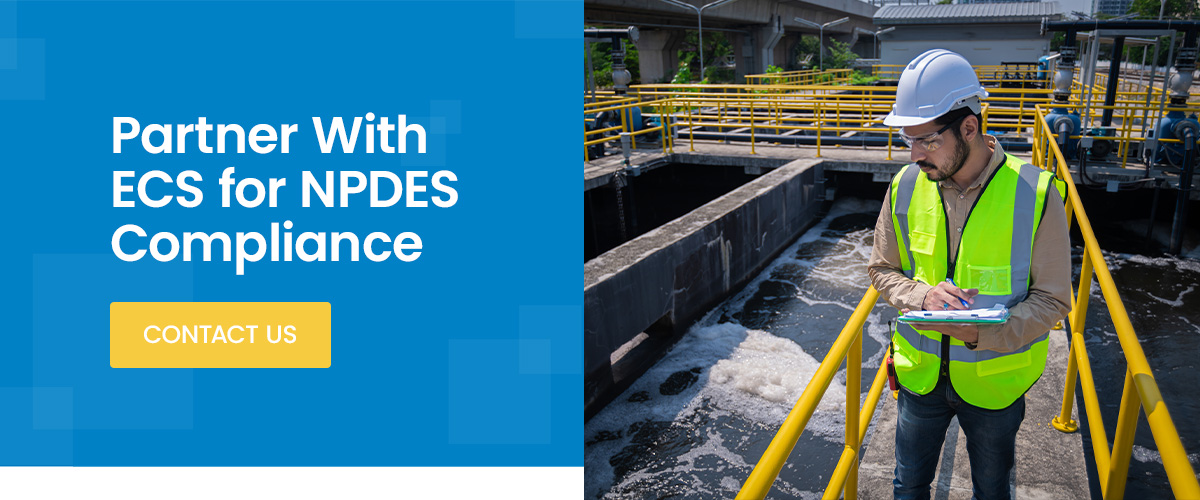Organizations face increasing pressure to maintain strong environmental practices while managing operational efficiency. Water quality protection is a key priority, with regulatory requirements shaping how construction projects and businesses handle water discharges.
Navigating the complex world of environmental regulations can be a daunting challenge for businesses. With the potential for legal and financial consequences, it is important to understand and meet the requirements of environmental ordinances, including the National Pollutant Discharge Elimination System (NPDES).
This guide provides the knowledge and tools related to NPDES compliance to protect water quality and safeguard your business interests.
What Is NPDES?
The National Pollutant Discharge Elimination System (NPDES), established under the Clean Water Act, is a permitting program that controls point-source pollution. It establishes a structured approach to regulating the discharge of pollutants into US waters.
This program stems from the understanding that regulated discharges need systematic monitoring and control to protect water resources. Businesses that discharge wastewater or stormwater into surface waters typically must obtain an NPDES permit. Through permitting requirements, the NPDES program helps reduce pollutant loading while supporting sustainable business operations.
Types of NPDES Permits
NPDES permits depend on specific types of discharges. Wastewater discharge permits control point-source pollution from industrial facilities, sewage plants and other sources. These permits fall into two main categories:
- Individual permits designed for unique facility needs.
- General permits covering similar operations within specific industry groups.
Permits establish pollutant levels for discharges, typically lasting up to five years with renewal options. Understanding these factors helps organizations identify appropriate permit requirements and develop effective compliance strategies.
Types of Discharges Requiring NPDES Permits
Various discharges commonly fall under NPDES jurisdiction:
- Point-source pollution control discharges: These encompass water releases through constructed conveyances such as pipes, ditches or channels. These structures transport process water, cooling water and other industrial wastewater requiring treatment before release.
- Concentrated animal feeding operations (CAFOs): These face unique challenges in managing nutrient loads and bacterial contamination, necessitating specific permit coverage and management practices.
- Stormwater discharges from construction and industrial activities: These discharges can carry sediments, chemicals and debris into receiving surface waters.
- Other regulated activities: These include, but are not limited to, forest road construction, car washes, laundry facilities, industrial wastewater, seafood processing, and pesticide applications near water bodies.
The Importance of NPDES Compliance
NPDES compliance provides multifaceted benefits for your business:
Environmental Protection
Adhering to NPDES requirements can reduce the likelihood of stormwater pollution and other spills to protect water quality. A stormwater pollution prevention plan (SWPP) is a roadmap for identifying potential contamination sources and implementing measures to protect against adverse impacts on nearby waters. Spill prevention, control and countermeasure (SPCC) plans also align businesses with the Clean Water Act to safeguard water quality. Noncompliance can significantly reduce aquatic ecosystems.
Legal and Financial Implications
Noncompliance with environmental regulations can result in hefty fines, costly litigation and criminal penalties for businesses. Organizations facing compliance challenges may encounter mandatory facility upgrades and increased regulatory oversight. These situations can strain resources and damage business relationships. Beyond immediate financial impacts, compliance issues may damage a company’s reputation, erode stakeholder trust and harm your bottom line.
Operational Benefits
Robust NPDES compliance measures can improve process efficiency through regular monitoring and optimization. Organizations may experience reduced material losses, enhanced documentation systems and strengthened operational controls. These improvements support environmental protection and business sustainability.
Steps to Achieve NPDES Compliance

Achieving NPDES compliance involves the following systematic approach:
Identifying Your Business’s NPDES Requirements
The first step is determining the specific NPDES requirements applicable to your business by reviewing facility operations and discharge points. This evaluation should evaluate production processes, current treatment systems and receiving water characteristics. To begin the compliance process, review relevant environmental regulations for businesses and consult environmental professionals as needed.
Applying for Wastewater Discharge Permits
The permit application process demands careful attention to detail and thorough documentation. Organizations should characterize their discharges, document treatment methods and prepare comprehensive site information detailing facility operations. Careful preparation and attention to detail are key for a successful application.
Implementing a Stormwater Pollution Prevention Plan (SWPPP)
A robust SWPP is vital to NPDES compliance. It should identify potential sources of stormwater pollution and outline pollution control measures. This plan guides ongoing compliance efforts through structured monitoring procedures and staff training requirements.
Monitoring and Reporting Requirements
NPDES permits often come with specific monitoring and reporting obligations. These requirements may involve sampling and testing your discharges, maintaining detailed records and submitting periodic reports to regulatory authorities. Correct and timely reporting is important to demonstrating your commitment to compliance.
How to Maintain NPDES Compliance
Maintaining NPDES compliance requires ongoing diligence and proactive management.
Regular Audits and Inspections
Internal compliance reviews can identify potential issues before they escalate into violations. These audits allow companies to take corrective actions before issues escalate into violations. Proper documentation of findings supports continuous improvement in environmental management practices. Routine internal compliance reviews also enable businesses to prepare for regulatory assessments, as they can occur with short notice.
Staying Informed on Environmental Regulations for Businesses
Environmental regulations for business are subject to change. Maintaining up-to-date knowledge of regulatory requirements supports effective compliance management. Organizations benefit from consulting environmental professionals, participating in industry groups and attending training sessions. This ongoing education helps businesses adapt to changing requirements while maintaining strong compliance programs.
Handling Noncompliance Issues
Addressing compliance gaps requires prompt attention and systematic approaches. Organizations should document issues, implement corrective measures and enhance staff training. Open communication with regulatory agencies supports effective resolution of compliance challenges.
Frequently Asked Questions About NPDES Compliance
To help businesses better understand NPDES compliance, here are answers to some common questions:
What Is Point Source Discharge?
Point-source discharge refers to discernible, confined and discrete conveyance, such as pipes, ditches or channels, from which pollutants are — or may be — discharged into US waters.
What Is the Difference Between General and Individual NPDES Permits?
General NPDES permits cover multiple facilities with similar discharges and requirements, while individual permits suit specific facilities with unique discharge characteristics or regulatory needs.
How Much Does an NPDES Permit Cost?
The cost of an NPDES permit is not standardized. It varies by state and depends on factors such as facility size, discharge volume and pollutant type.
Partner With ECS for NPDES Compliance
Achieving and maintaining NPDES compliance is an important business responsibility but navigating complex environmental regulations for businesses can be challenging. As a professional environmental engineering consulting firm, ECS offers the expertise and support your business needs to meet its NPDES obligations effectively. By partnering with ECS, you can avoid legal and financial pitfalls while operating efficiently and protecting the environment.
ECS provides tailored NPDES compliance services, spill prevention plans and custom water treatment system design for long-term maintenance of water quality near a project site. Paired with ECS’ deep industry knowledge and cutting-edge technology, these services help your business thrive while contributing to a greener future.
Contact us today to learn how our environmental consulting services can help your company navigate the intricacies of NPDES compliance with confidence.


